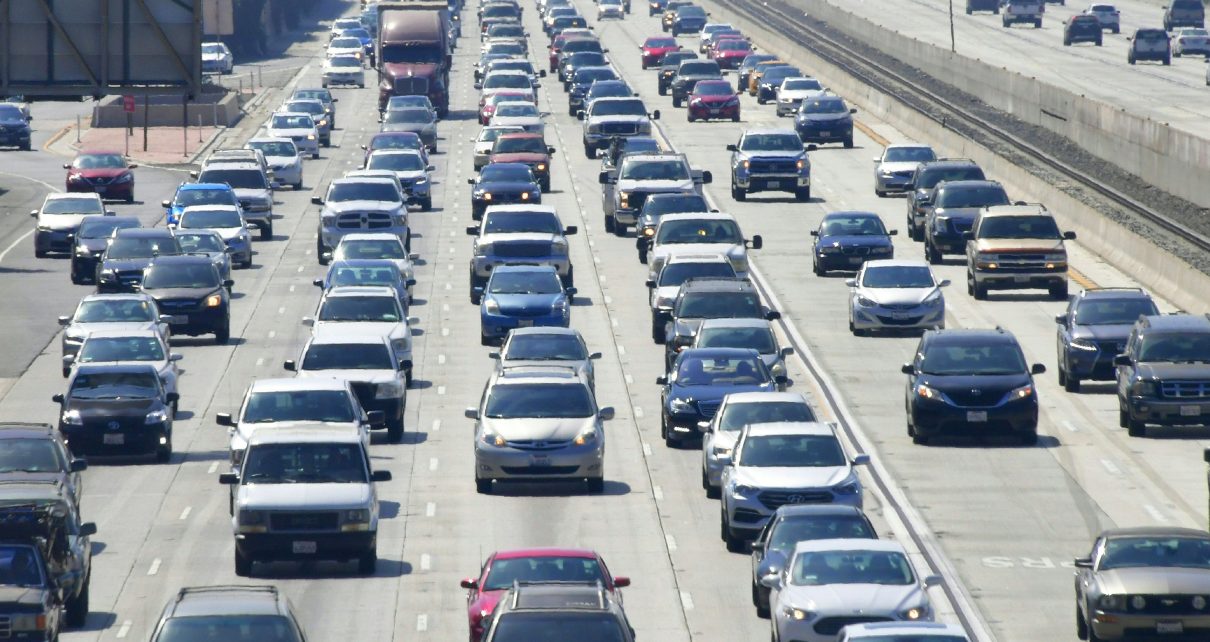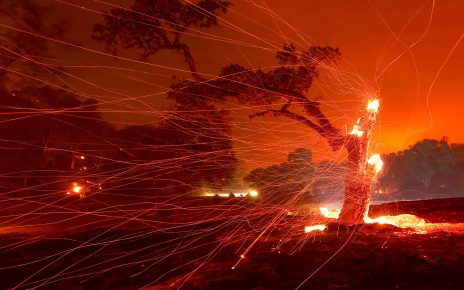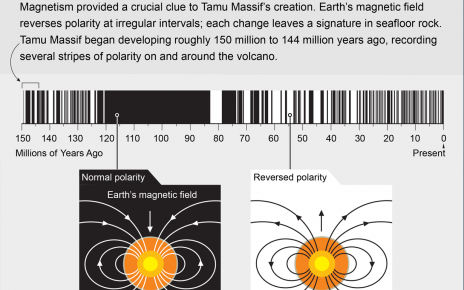Electric buses are hitting Los Angeles streets. Low-income residents can access discounted electric car-sharing. And electric vehicle charging stations are multiplying.
Those changes are part of LA’s effort to cut the number of gas-fueled vehicles from its streets. The region, famous for its traffic, wants to get more people in EVs, trains and buses and on bikes before the Summer Olympics come to LA in 2028.
LA Mayor Eric Garcetti touted the first zero-emissions bus produced for the LA County Metropolitan Transportation Authority, known as Metro, earlier this week.
“As we continue to make our energy production more and more green, that means that the environmental footprint and the global emissions of our transportation sector can help us drive a global Green New Deal that can help us save this planet and life on it,” Garcetti said.
Momentum toward clean transportation in LA started several years ago, but it gained speed last year when Garcetti announced the Transportation Electrification Partnership, an alliance of cities, carmakers, utilities, transit agencies and a clean tech incubator.
The group wants zero-emissions vehicles to constitute nearly a third of cars in the region within eight years. Right now, they amount to 10% in LA County. Meeting the goal requires 80% of new car purchases to be fuel cell or electric by the deadline.
The new goals follow earlier ones. Metro in 2017 said it would switch to all electric buses by 2030. It plans to add 105 by the end of next year.
The Los Angeles Department of Transportation, the city’s transit authority, wants an all-electric fleet by 2028. Earlier this year, it ordered 155 electric buses at $104 million, the largest purchase in U.S. history. BYD and Proterra Inc., two bus makers, will manufacture them in factories on the outskirts of LA County.
The COVID-19 pandemic has thrown up some roadblocks. BYD closed for several weeks and now is in a “phased reopening,” said spokesman Frank Girardot. Before the pandemic, BYD made about two buses a day. That has slowed with workers on staggered shifts, but Girardot insisted the company is on schedule to fulfill the city’s order.
The company is offering buyers options that include antimicrobial poles and ultraviolet lighting that can be used to clean the interior when the bus isn’t traveling.
Proterra closed for one day to get medical staff and protective gear in place, said John Walsh, senior vice president. When it reopened, the first call company leaders made was to LA’s transit agency to see if it still wanted new buses.
Their response? “We need the buses; please continue to build them and ship them,” Walsh said.
But the pandemic has hit other transit authorities hard, and some have less funding to buy new vehicles, Proterra officials said. There’s a need for more federal help, Walsh said. The first COVID-19 relief bill passed by Congress provided about $25 billion for the sector, but that “doesn’t go very far,” he said.
EV demand threatened
The pandemic could also lower consumer demand for EVs, said Gil Tal, director of the Plug-in Hybrid & Electric Vehicle Research Center at the University of California, Davis.
“The economy is going to slow down,” he said. “Gas prices are going to be low,” which could prompt people to buy more crossovers and SUVs.
Because of the expectation of those trends, car companies are not manufacturing a steady supply of EVs.
Meeting the goals of the LA partnership is feasible but requires strong policies at the state and federal levels, Tal said.
“They will not have enough cars to buy in the market without a strong ZEV mandate or similar type of policy that will push the market to higher numbers,” he said.
Charging downtown?
To make people more secure about buying EVs, the partnership wants to get more chargers installed. About 8,000 now exist in LA. The Los Angeles Department of Water and Power wants to increase that to 28,000 by 2028.
The coalition also wants to put all income groups behind the wheel of EVs. It opened an EV-sharing program next to subsidized housing in Pacoima, in the San Fernando Valley. A second site will be launched next month in San Pedro, southwest of LA.
Both pilot programs, which use funding from the state, offer EVs for $2 an hour. The normal rate is $9 an hour, said Matt Petersen, chair of the Transportation Electrification Partnership and CEO of Los Angeles Cleantech Incubator.
The coalition also wants to get 20% of drivers off the road to meet greenhouse gas and air quality goals. Metro, the regional rail system operator, is studying how to implement “congestion pricing” in downtown LA or another car-heavy area.
A pilot test would likely come in 2022 based on the study’s findings, Petersen said.
The electrification push also focuses on larger vehicles. Later this year, the partnership will run a test of incentives for ZEV delivery trucks. It will happen in a voluntary zero-emissions delivery zone in coastal Santa Monica. It’s planned for a 1-square-mile area.
The pilot likely will be launched in November. Right now, options include letting clean vehicles have priority and access to the curb.
Southern California Edison is part of the Transportation Electrification Partnership. The utility last week said it strives to make part of its corporate vehicle fleet electric by 2030.
The utility, a subsidiary of Edison International, has a stake in the push for more EVs in the LA region. It’s installed more than 1,800 EV chargers in its territory and wants to install about 50,000 more in the coming years. The company gets to recoup its costs through electric rates.
“As we encourage our customers to consider fleet electrification, it is critical for our company and our industry to continue to show leadership in this area,” Drew Murphy, senior vice president of strategy and corporate development for Edison International, said in a statement.
Reprinted from Climatewire with permission from E&E News. E&E provides daily coverage of essential energy and environmental news at www.eenews.net.



